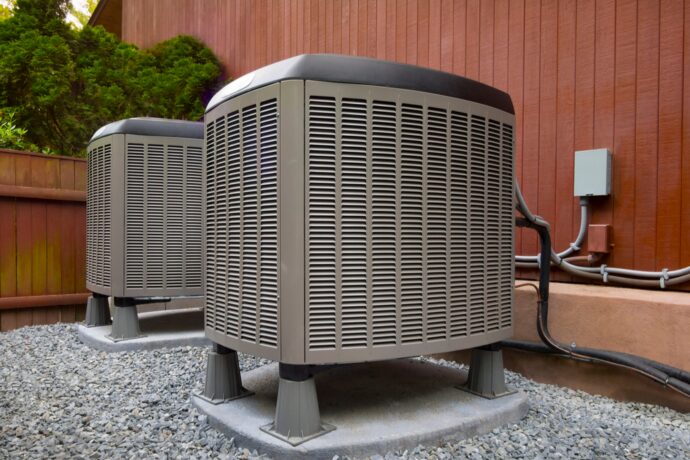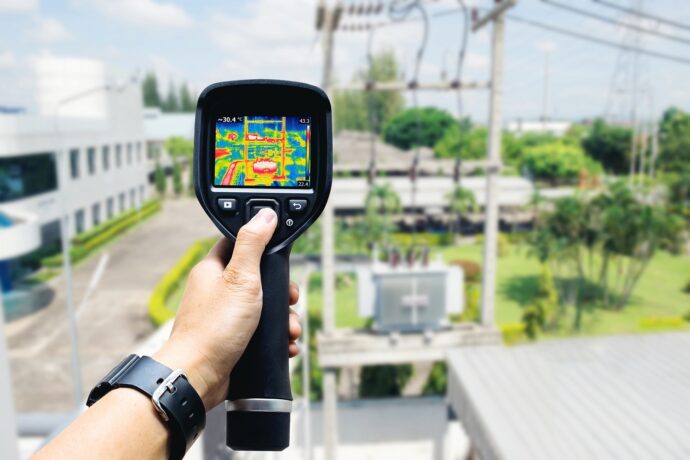It seems as though every year the cost of heating our homes in the winter goes up and up. No matter how conservative with the heat we try to be, the cost of fuel or electricity is often beyond what we can afford. In an effort to be as frugal as possible, we either shut the furnace off during the day or keep the thermostat too low for comfort.
The bad news is that we can’t do anything about the rising cost of fuel, but the good news is that there is technology that will all but do away with those high electric and fuel bills when it comes to heating your home.
1. Install a Dual-Purpose Heat Pump

What exactly is a Heat Pump? Is it worth installing? How much does a Heat Pump cost? And how effective is it at saving energy?
Dual purpose is a term used to describe devices or systems that provide heating and cooling functions simultaneously. And what better way to save energy costs than installing a heat pump in your home? This is especially important during winter when air conditioning bills are at their peak.
Dual-purpose heat pumps (DPHPs) use electricity and mechanical force to circulate air for both heating and cooling purposes. DPHP’s often have two different evaporator coils, each designed for either heating or cooling. Most modern designs have separate units for each function, some even incorporate solar panels and battery charging systems to help reduce electric bills. When you install a dual-purpose heat pump, you make sure to consider how many people will be occupying your home at any given time.
This is an amazing bit of technology that will help to significantly reduce your energy bills. The principle through which it works to provide heat for the home is by exchanging warmer air from outside to cooler air being passed through the unit. These innovative heat pumps from bpcventilation.ie Ireland use a minimal amount of electricity, but that isn’t all.
Not only can the heat be exchanged between warm and cool air, but it can be exchanged between air and water. This makes heat pumps extremely efficient all the way around. You will no longer need an electric or gas water heater because one single unit using just a small amount of electricity to run fans, for example, can heat both your home and your hot water. It’s like getting two for the price of one.
2. Control with a Smart Thermostat

Smart thermostats are devices that allow us to automate HVAC (heating, ventilation, and air conditioning) systems while conserving natural resources. A smart thermostat is a programmable device that monitors the temperature of the space inside and regulates the temperature accordingly. This technology is not only useful for saving money, but it also offers peace of mind that the system is operating correctly.
Such devices are taking over our homes across the globe. This device has become essential as it provides us with comfort at home and makes our lives easier in several ways. They provide homeowners with both convenience and control. They automatically adjust temperature settings depending on user habits and environmental conditions, allowing them to save energy and reduce utility bills. While the initial investment can seem steep, they generally pay for themselves within a year or two.
Smart thermostats are another way to save money because they can be controlled remotely. All you need is the Smart thermostat and an app on your mobile phone to control it. Consider for a moment programming your thermostat to turn the unit on to a comfortable temperature at the time you normally leave work for the day.
However, one day the boss calls a meeting and requires you to stay a couple of extra hours that day. Instead of letting the thermostat set the heat pump to turn on at 5PM, you could communicate through your mobile device to begin warming the home at 7PM. It’s just another amazing bit of technology that can help you reduce costs even more.
3. Find Draughts with an Air Leak Detector

A leaky AC system can cost you thousands of dollars each year and cause major damage to your home. If you’re worried about installing an air conditioner in your house, you should start looking for a reliable air conditioning leaker detector.
There are many different types of draught detectors that have been developed over time. These machines detect the amount of air being pulled through the building using various methods. In the case of home use, these devices have become increasingly sophisticated and affordable. One of the best options for a home user would be something simple that can be mounted easily onto the wall. Once the detector is triggered, it should be able to send out an alarm signal and make a noise.
Leaky or cracked AC systems could result in high utility bills, poor indoor comfort levels, and increased energy consumption. In addition, leaks and cracks in ductwork pose serious health risks because they allow moisture to enter the building envelope. This leads to mold growth, wood rot, and deterioration of insulation materials. The type of detector you choose would depend on factors like how much money you want to spend, where you plan to put it, what else is going to be in the room, if any, etc. There are two main choices for those looking to buy such a device.
Then there are those blustery days when you feel a freezing cold drought no matter where you are seated. Air leak detectors are handheld gadgets that help you to identify where the cold air is getting in. It could be seals gone bad on windows and doors or perhaps even cracks in doors that are barely noticeable. Who would think something that thin would let in the cold, but it does.
While there isn’t much you can do about the high cost of fuel or electricity, you can control the amount you use, or don’t as the case may be. With just these three bits of technology, this might be the first cold Irish winter ever that you won’t be dreading.















